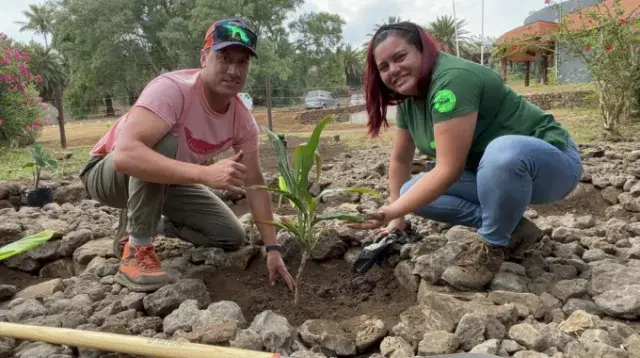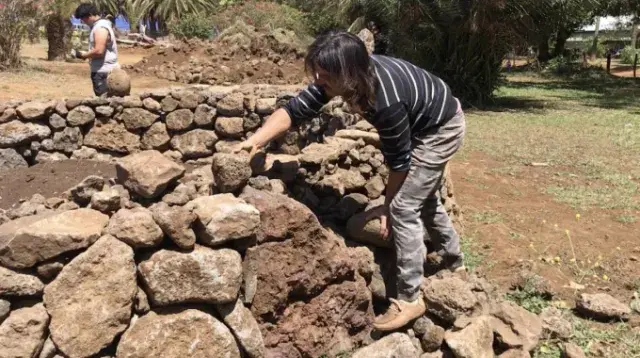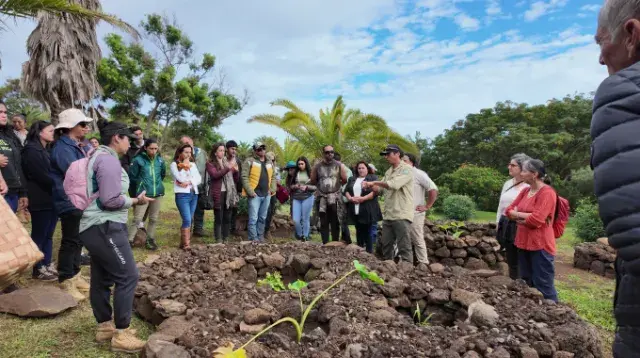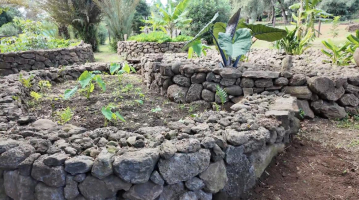News from our "Manavai" Project in Chile !
Project progress: The manavai and the plantations have been built: time for inauguration!
The inauguration of the protected area took place on May 9, 2024, bringing together the provincial presidential delegate, community leaders, representatives of public bodies on the island, teachers from local schools, practitioners of traditional medicine and a delegation of students from the Easter Island educational village. This inauguration provided local people with an opportunity to learn more about how the manavai operate, and to understand how everyone can help protect the island’s heritage.
Plantings had taken place ahead of the big day. A substrate was used inside the manavai, and constant irrigation was maintained until the arrival of the February rains. Inside the structures, species such as the Toromino, the Gentian tree, the Panama wood and many other endangered species were planted.
However, where it was useful to do so, some plants were planted outside the manavai; for example, an indigenous variety of banana.
By way of a reminder, this project covers the restoration of a protected area named the “Manavai Demonstration Garden”, covering over 4,000m2. This area on Easter Island, also known as Rapa Nui, is home to native island plants preserved within structures typical of the culture, known as “manavai”. This restoration project also aims to preserve these age-old techniques and ensure their transmission to younger generations.

Objective 1: To protect species.
The native flora on the island comprises/count around 48 species, 11 of which are endemic, yet this represents a mere fraction of the botanical wealth once found on the island. Research reveals the existence of more than 20 extinct species – the victims of competition from invasive species, logging and uncontrolled grazing.
This manavai garden is home to a large number of native species endemic to the island, several of which are facing serious conservation problems. Threats such as repeated forest fires, the uncontrolled movement of livestock on the island and climate change have created an extremely critical situation for several plant species. At this critical juncture, the conservation of Easter Island’s native flora has become a race against time. The absolute priority is to save the basic genetic material of the most threatened species and to expand the areas in which these species grow.
A substrate was used inside the manavai for planting, and constant irrigation was maintained until the arrival of the February rains. Species were planted inside the structures – and also outside where it was useful to do so, such as certain native varieties of bananas.

Objective 2: To maintain ancestral techniques
One of the keys to the project lies in safeguarding the ancestral Rapa Nui technique of “manavai”. This word from the Rapa Nui language can be translated as “the power of water”. These circular structures built with volcanic stones demonstrate the resilience of the island’s ancient culture when faced with the environmental challenges of past centuries. Within these stone circles, plants enjoy damper conditions and protection from the wind. These structures are simple but typical of the island, and are a solution of tried and tested historic value. At least 1,500 manavai are known to be scattered across the island, proving that they were widely used in ancient villages.

Objective 3: transmission to future generations
The final objective of this garden is to raise awareness among younger generations. If the island is to adapt better to climate change, the transmission of ancestral techniques to future generations is essential.
In addition, this manavai garden serves as an educational space for raising awareness of the importance of conserving biodiversity; for example, by encouraging school students to contribute to the planting of species.
Knowledge is also passed on during guided tours, followed by conferences and activities for children.
To conclude, this conservation project was designed on the basis of a participatory model, in which the local population plays a central role:
« This garden is more than just a collection of plants; it is a living learning centre where the community can come together to understand and actively participate in the practical preservation of our natural heritage; in this sense, it is a resource available to our community »
Enrique Tucki, from the CONAF Rapa Nui technical unit.

Ancestral knowledge to the rescue for indigenous plants
